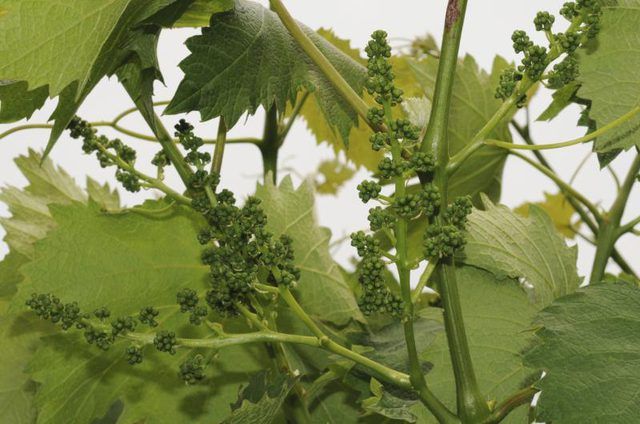Bulbs
Flower Basics
Flower Beds & Specialty Gardens
Flower Garden
Garden Furniture
Garden Gnomes
Garden Seeds
Garden Sheds
Garden Statues
Garden Tools & Supplies
Gardening Basics
Green & Organic
Groundcovers & Vines
Growing Annuals
Growing Basil
Growing Beans
Growing Berries
Growing Blueberries
Growing Cactus
Growing Corn
Growing Cotton
Growing Edibles
Growing Flowers
Growing Garlic
Growing Grapes
Growing Grass
Growing Herbs
Growing Jasmine
Growing Mint
Growing Mushrooms
Orchids
Growing Peanuts
Growing Perennials
Growing Plants
Growing Rosemary
Growing Roses
Growing Strawberries
Growing Sunflowers
Growing Thyme
Growing Tomatoes
Growing Tulips
Growing Vegetables
Herb Basics
Herb Garden
Indoor Growing
Landscaping Basics
Landscaping Patios
Landscaping Plants
Landscaping Shrubs
Landscaping Trees
Landscaping Walks & Pathways
Lawn Basics
Lawn Maintenance
Lawn Mowers
Lawn Ornaments
Lawn Planting
Lawn Tools
Outdoor Growing
Overall Landscape Planning
Pests, Weeds & Problems
Plant Basics
Rock Garden
Rose Garden
Shrubs
Soil
Specialty Gardens
Trees
Vegetable Garden
Yard Maintenance
How to Identify Grapevine Leaves
How to Identify Grapevine Leaves. Grapevines (Vitis spp.) include the primary cultivated wine grape (Vitis vinifera) and the common wild grapes: fox grape (Vitis labrusca), summer grape (Vitis aestivalis) and riverbank grape (Vitis riparia). Today, many grape varieties are hybrids of these and other grape species. Although wine grapes grow mostly...
Grapevines (Vitis spp.) include the primary cultivated wine grape (Vitis vinifera) and the common wild grapes: fox grape (Vitis labrusca), summer grape (Vitis aestivalis) and riverbank grape (Vitis riparia). Today, many grape varieties are hybrids of these and other grape species. Although wine grapes grow mostly in vineyards and home gardens, you may come across wild grapes in open woods, on roadsides, near ponds and rivers. Wine grape is hardy in U.S. Department of Agriculture plant hardiness zones 5 through 9. Fox, summer and riverbank grapes are hardy in USDA zones 6 through 9, 3 through 7 and 3 through 9, respectively. You can easily identify wine and wild grapevine leaves, even in the absence of grapevine fruit, because they have a number of distinguishing characteristics.
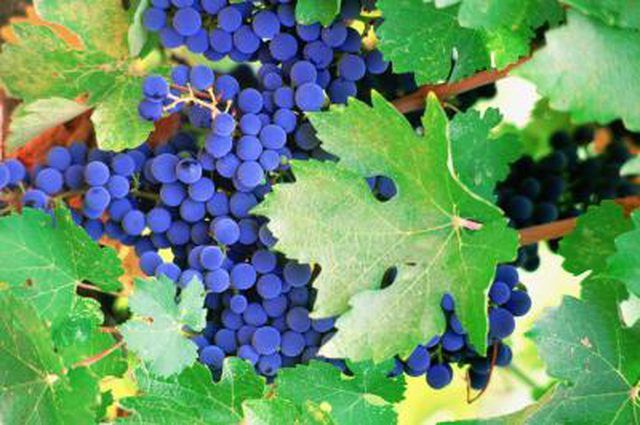
Grapevines are vigorous climbers and always grow upward, unlike other types of vines that grow equally well along the ground. All grapevines climb by means of tendrils. Wine grapes are trained to grow on wires and other supports, whereas wild grapes climb fences, trees, shrubs and other vegetation. The riverbank grapevine can reach 50 feet in length and may overwhelm other plants. Grapevinelike leaves on an upward-growing vine are the first step in identifying grapevine leaves outdoors.
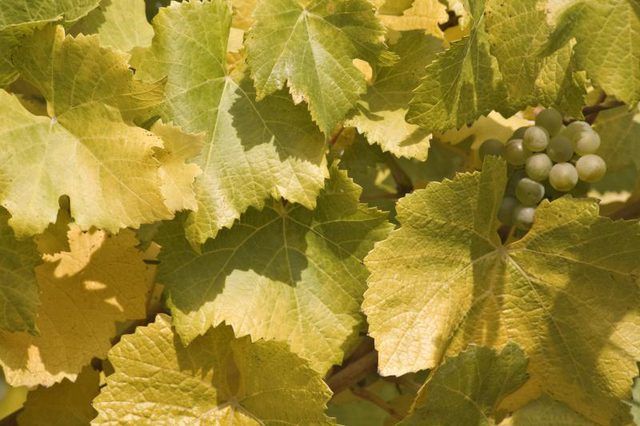
Grapevine leaves have a distinctive lobed shape or heart-shaped form. The leaves have three to five lobes. Some grapevine leaves, such as those of summer grape, are deeply lobed, while fox and riverbank grapes' leaves have shallow lobes. It is not uncommon to find deep- and shallow-lobed leaves on the same vine. The leaves of summer grape are 3 to 8 inches long. Fox grape has 4- to 8-inch-long leaves, and riverbank grape has leaves up to 6 inches long. The leaves of wine grape range from 3 1/2 to 11 inches long, depending on the variety. The width of a grapevine leaf is about the same as its length.
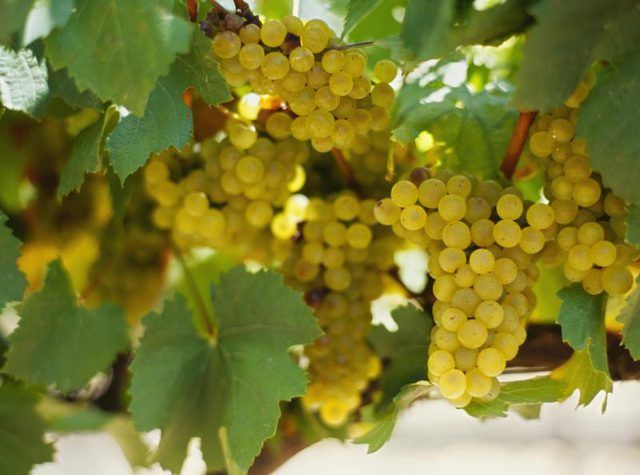
The margins of all grapevine leaves are toothed. Leaves on wine grape and riverbank grape are coarsely toothed while fox grape leaves are finely toothed. Look at the underside of leaves to further the identification process. The upper surface of grapevine leaves is smooth and bright green, but the underside is a duller color and exhibits wooly hairs that are white or light brown.
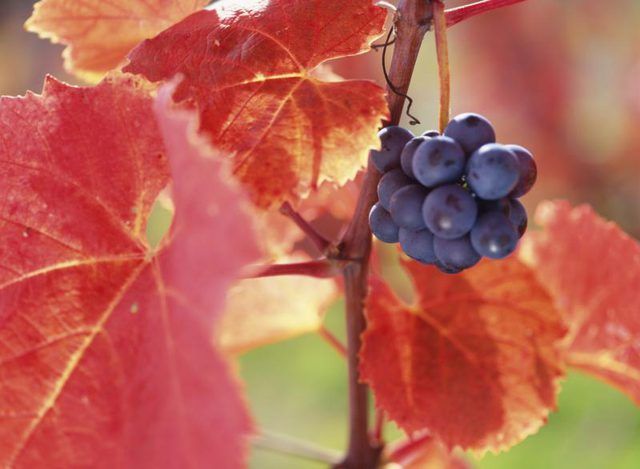
If you come across a vine's leaves that resemble grapevine leaves but the vine doesn't have tendrils, then the leaves aren't grapevine leaves. Tendrils are essential for grapevines to climb. Grapevines usually have forked tendrils opposite every two or three leaves along the vines. Fox grapevine is an exception to the rule because its tendrils often are situated opposite three or more leaves in a row.
